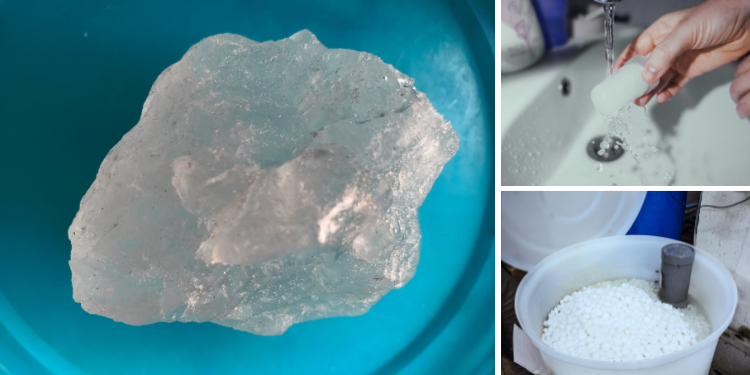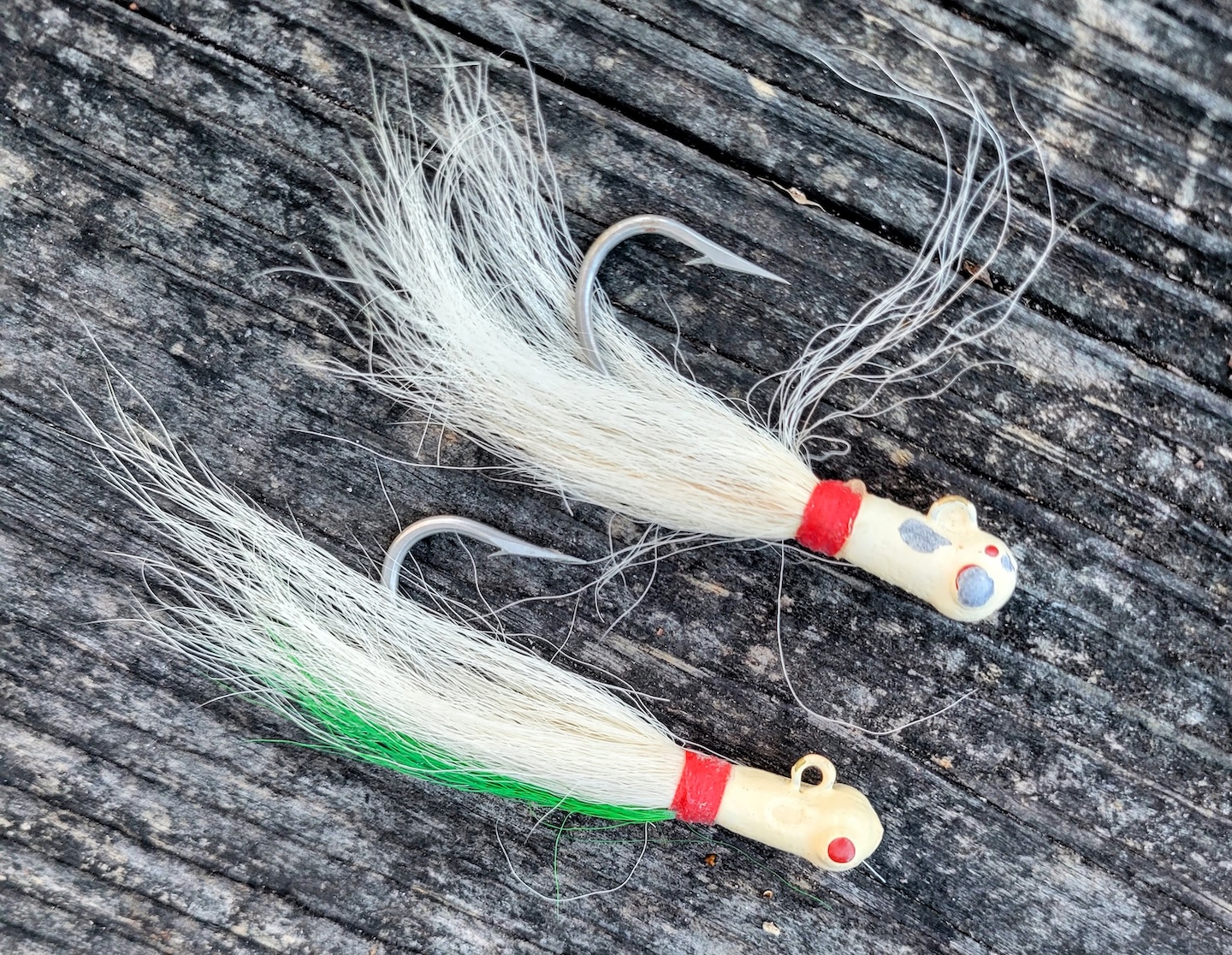5 Native American Weapons You Should Have
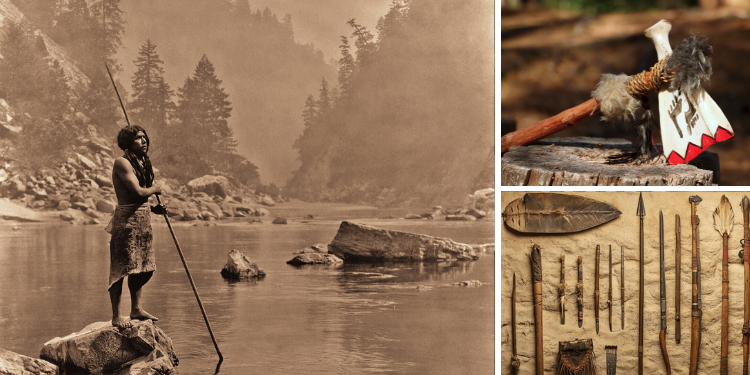
Let’s be honest, deep down within every prepper, hides a little bit of a Burt Gummer fantasy. You’re probably very proud of your arsenal, and chances are good, you’re thinking about how to add to it. You might even have some gunsmithing skills and the ability to make your own ammo.
Yet, firearms have a limited lifespan, in a long enough catastrophe, you’ll eventually run out of ammo and/or the means to make more. Not to mention the big boom of a rifle dropping a deer in the forest is going to let everyone else for miles around know that you’re there.
So, while you’re planning to add to your arsenal and grow your ever-expanding skill set, it would only serve you to look into the weapons and techniques used by Native Americans and successful primitive people.
Atlatl
Range: 10 to 25 yards
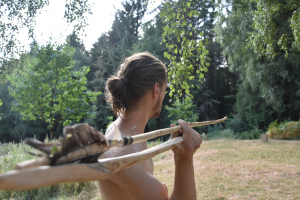
Primary Purpose: Hunting big game and defense
Power: Equivalent to a 50-pound draw bow
Time to Make: 2 to 4 hours + 2 to 4 hours for dart/spear
Materials: Wood and Bone/Antler (Optional)
If you were to look at the whole of human history, the atlatl is the number one weapon that killed the most big game. It was an advanced spear-throwing tool that many anthropologists believe gave us the edge over other primitive people like the Neanderthals and the Denisovans.
Native Americans brought this primitive, yet highly effective spear thrower with them when they crossed the land bridge. It continued to be a favorite weapon even after the introduction of the bow and arrow.
The atlatl was a spear thrower that used leverage and mechanical advantage to increase the velocity of the missile. Before its invention, Paleoindians and other primitive peoples had to thrust a spear to get it to penetrate deep enough to kill big game. Being able to throw the spear from a distance increased penetrating power without decreasing accuracy.
There are plenty of online videos that show you how to make them. You can even buy authentic ones online and use that as a guiding template to build more throwers and darts/spears. Or you can find how to make yourself one from this wilderness long-term survival guide, as long as other weapons you can make from natural materials.
Tomahawk
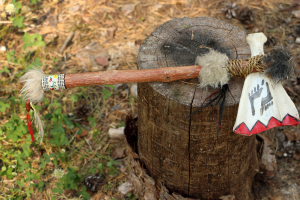
Range: Hand-to-Hand
Primary Purpose: Defense and chopping/cutting tool
Time to Make: 2 to 4 hours + 2 to 4 hours for dart/spear
Materials: Wood and Bone/Antler (Optional)
When it comes to hand-to-hand native American weapons for melee combat, few can stand up to the tomahawk. It has the speed and momentum of a machete, with a similar slashing power. With training it can also become a highly effective short-range thrown weapon.
A good tomahawk was also used as a cutting tool. Largely for chopping wood, but also for processing large game. Much in the same way you might use a hatchet today, except faster, and arguably more versatile.
One of the things to consider about a tomahawk as a melee weapon is that it doesn’t have to be lethal to be effective. The force it strikes with, and the gashing wound it makes can be cripplingly painful.
Before Europeans introduced metallurgy tomahawks were made from stone, bone, or antler fastened to a hardwood handle. You could easily make a tomahawk with quality scrap metal and a metal grinder. There are tons of online videos, and you can even buy a tomahawk online made from modern-day materials.
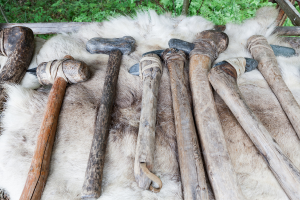
Stone Clubs
Range: Hand-to-Hand
Primary Purpose: Combat
Time to Make: 2 to 10 hours
Materials: Wood and Stone
A stone club or “War Club” is a primitive weapon used by Native Americans and many other primitive cultures. It’s essentially an older version of a European, medieval mace. It was the sort of hand-to-hand weapon that a tribe could produce relatively quickly if they had to make war.
On the face of it, a basic stone club is a rock securely fastened to the end of a 2 to 3-foot-long robust wooden handle. Like a tomahawk, you can wield it quickly and it makes a cripplingly painful wound.
Related: 23 Medicinal Plants the Native Americans Used on a Daily Basis
The common tactic is to try to hit your opponent in the head or face with the stone club before they get at you with a knife or their own war club. To that point, the early French explorers who discovered woodland Native Americans using them called the stone club a casse-tête, which loosely translates as headache or brain teaser.
On paper, it’s relatively easy to make a stone club yourself, by attaching a rock the size of your fist to a section of dried oak or similar hardwood. Some pine sap adhesive, and some creative wrapping with sinew or cordage. The problem with this design is that you’re only going to get one or perhaps two solid strikes before the stone dislodges.
To get around this, savvy Native Americans would soften leather and cover the head of the stone war club with it. Then tighten, cure, and harden it to lock it in place. It ensured they wouldn’t end up bringing a stick to a stone club fight.
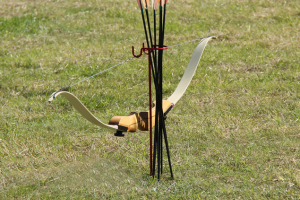
Bow and Arrow
Range: Up to 50 Yards
Primary Purpose: Hunting and Combat
Time to Make: Days to Months
Materials: Wood, Sinew, Flint, and Animal Fat
By the time Europeans interacted with Native American cultures the bow and arrow were the most common weapon used in the New World. However, there’s a widespread misconception that these were very simple weapons made from a bent sapling and some twine. A true, quality bow and arrow is a major work of art and primitive engineering that goes beyond simple bushcraft.
I had the chance to observe a workshop on how the Lakota/Sioux made bows from laminating sinew over carefully shaped, seasoned hardwood. Then waterproofed with animal fat. They demonstrated multiple bows in different stages of construction. The entire process of making one took months.
The flint-napping process of making arrowheads is also an art form onto itself. The workshop I took part in was very challenging, and even with close instruction I didn’t manage to create one worthy of tipping an arrow. Not to mention the art of fletching.
The overarching concern here is that if you aren’t adept at making a Native American bow and arrow now, and your modern bow fails in a SHTF scenario, you could be in dire straits. It’s important to know they used these weapons for both hunting and protection. In case of SHTF you can have some of these ready, but you can also try defending your property like this.
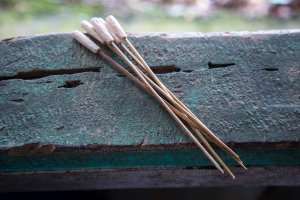 Blow Darts
Blow Darts
Range: Up to 20 Yards
Primary Purpose: Hunting
Time to Make: 1 day to 2 weeks.
Materials: Wood and Feathers
Blow darts tended to be more common with Native Americans and indigenous peoples in heavily forested areas and jungles throughout the New World. To this day tribes in the Amazon jungle use them as a primary means for hunting animals. Some will tip the darts with special poisons to maximize their effectiveness. They used to make their poison using one single plant.
There are a lot of advantages to having blowguns in your arsenal. Even if you plan on maintaining your food supply through hunting big game. Let’s say you head out to hunt deer, elk, or bear. Maybe you don’t see anything, but you know there’s one in the area.
Your stomach is grumbling on the walk back and you see a rabbit, or a squirrel that will put meat in your belly that night. Even if you have a .410 shotgun or a .22 rifle with you, the pop it makes could spook whatever big game is still in the area. Not to mention the added weight of packing yet another gun with you. If you’ve got a 2-pound blowgun in your pack, you can bring that bunny back without blowing out the area, or letting any other humans know you’re there!
Just like a Native American bow and arrow, there’s a common misconception that these are simple weapons you can slap together easily. Sourcing the correct materials is critical as you need the inner diameter of the blow gun tube and the darts to be very similar in size.
Canes and bamboo are common materials one can source in nature. However, the interior of the blow gun itself needs to be sanded and conditioned to be perfectly smooth. The slightest catch from a fibre of a splinter could grossly affect the accuracy of the dart.
The darts and the fletching that gives them accuracy are far more of an art form than the tube of the blow gun. Some great online videos can help you understand the process. With practice, and access to the right materials you can get good at making an effective blow gun capable of killing squirrels, rabbits, and birds.
Final Thoughts
The weapons used by Native Americans and other primitive people are worth considering as a backup or augmentation to your arsenal of firearms. Being proficient with atlatl or a bushcraft bow and arrow for hunting lets you save ammunition. They can even be a literal lifesaver if you run out of ammo, or something happens to one of your guns that you can’t fix.
Other Native American weapons like a blow gun and darts can also give you the ability to silently hunt small game. Along with an atlatl or a bow, they’re a great way to take down animals without spooking any other animals in the forest. They’re also silent enough not to advertise your presence to other people, the way a rifle or shotgun does.
Native American weapons like the tomahawk and the stone club are arguably better suited for melee self-defense. A single strike from one can leave your opponent with a cripplingly painful wound. A bushcraft tomahawk can even double as a cutting tool for breaking down animals and cutting cordage.
You may also like:
Cheap Methods To Store Fuels
11 Things Native Americans Carried With Them To Survive In The Wild (Video)
Cowboy Cough Syrup with Whiskey
Better Than Walmart: Stores to Get Survival Foods for a Bargain
15 SHTF Uses for WD-40
Read the full article here


